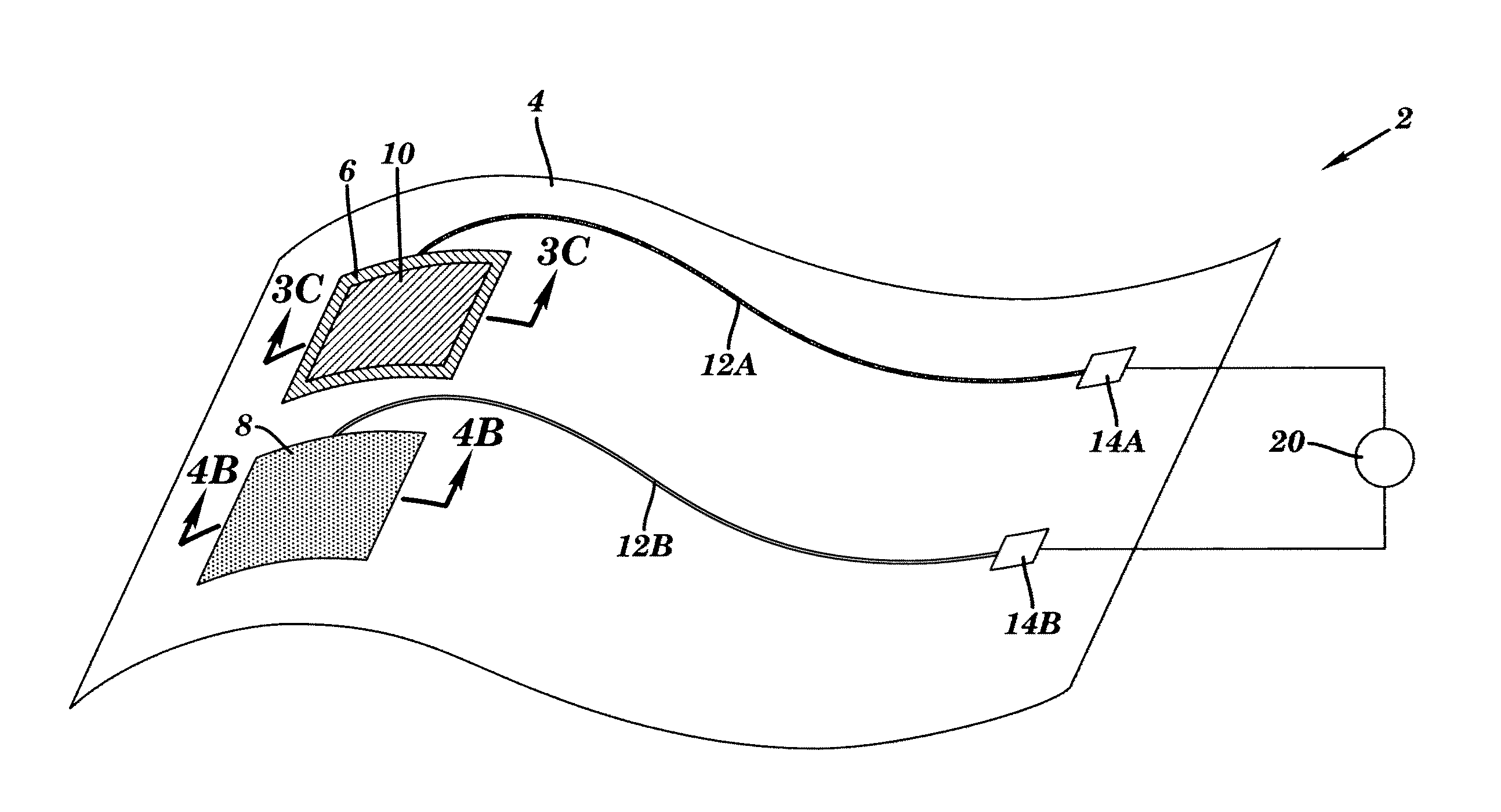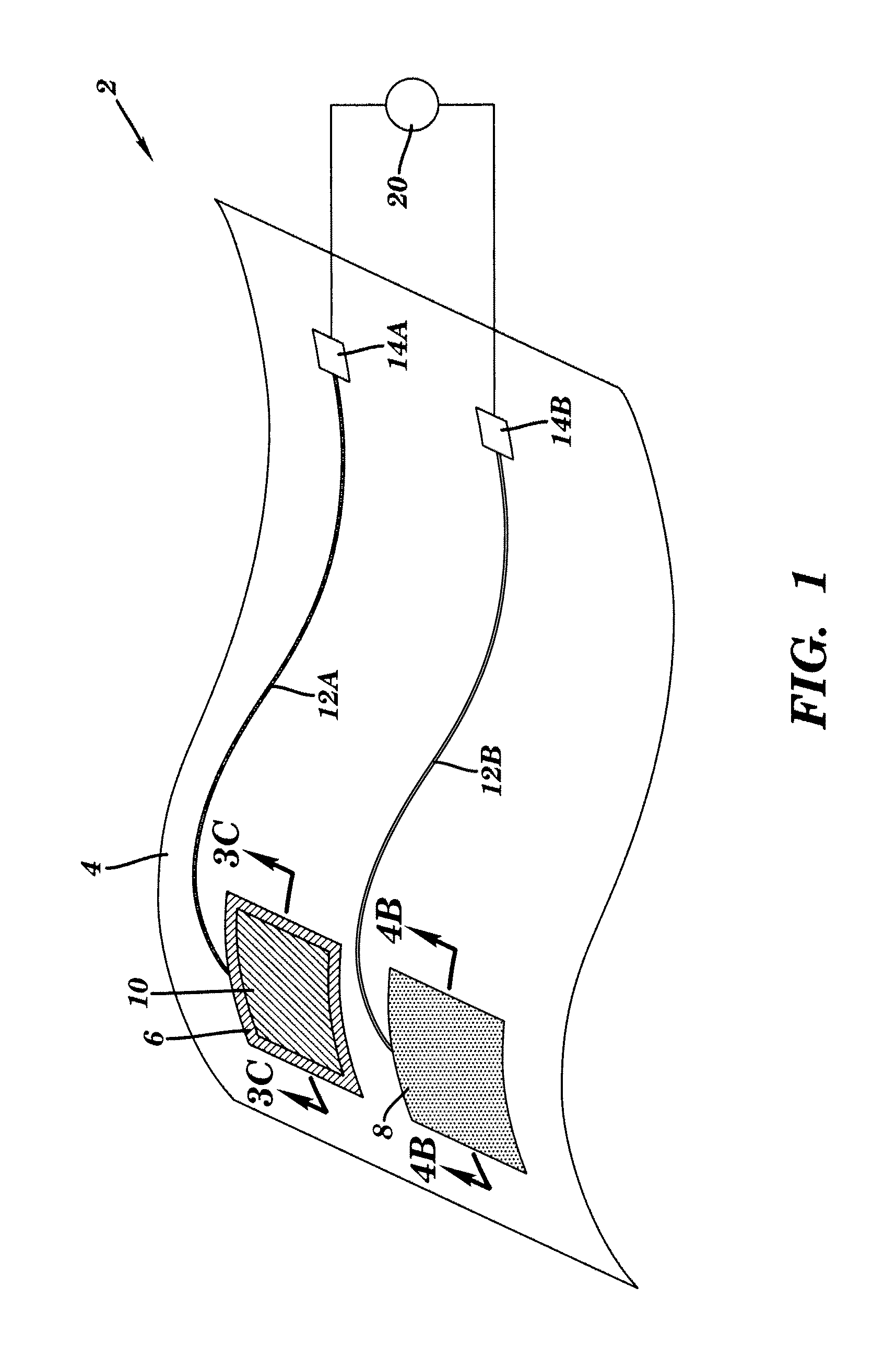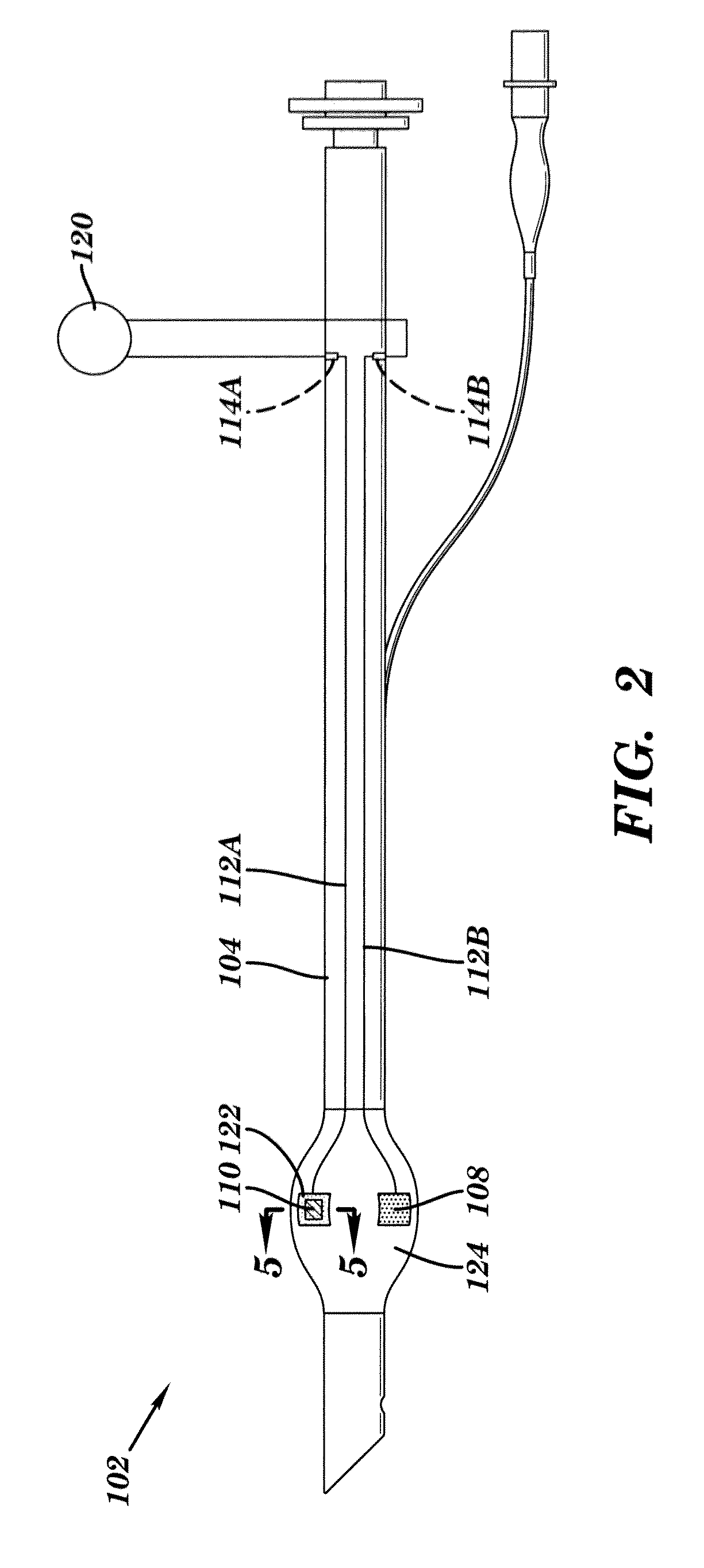Device for sensing a target chemical and method of its making
a target chemical and device technology, applied in the direction of diaphragms, cells, immobilised enzymes, etc., can solve the problems of low surface roughness, damage to surrounding tissue, local decrease of ph near the electrode, etc., to avoid adhesion, surface topographical problems, and excellent adhesion to substrates. , the effect of avoiding the need for costly or time-consuming surface pretreatmen
- Summary
- Abstract
- Description
- Claims
- Application Information
AI Technical Summary
Benefits of technology
Problems solved by technology
Method used
Image
Examples
example 1
Measurement of Hydrogen Ion Concentration
[0067]For production of silver electrodes, polyvinyl chloride (Aldrich, high molecular weight) was dissolved in cyclohexanone at a concentration of 12% by weight, and silver flakes (Ames-Goldsmith, MBT-79) were added to bring the ratio of silver to polymer to 92:8. The total solids present in the ink composition were 63% by weight. The materials were dispersed and deaerated using a centrifugal planetary mixer (Kurabo Mazerustar model KK-50S).
[0068]The ink was loaded into a syringe and extruded through a Micropen dispensing apparatus onto the surface of a commercially available standard endotracheal tube (Unomedical Air Management, Magill, HVLP cuff) to yield four square-shaped electrodes situated on the surface of the cuff. The electrodes were extended with a narrower written trace down the tube for a length of approximately 10 cm to allow for subsequent interconnection with external devices. The ink was cured by forced air, at 130° C., for 1...
PUM
| Property | Measurement | Unit |
|---|---|---|
| Thickness | aaaaa | aaaaa |
| Thickness | aaaaa | aaaaa |
| Flexibility | aaaaa | aaaaa |
Abstract
Description
Claims
Application Information
 Login to View More
Login to View More - R&D
- Intellectual Property
- Life Sciences
- Materials
- Tech Scout
- Unparalleled Data Quality
- Higher Quality Content
- 60% Fewer Hallucinations
Browse by: Latest US Patents, China's latest patents, Technical Efficacy Thesaurus, Application Domain, Technology Topic, Popular Technical Reports.
© 2025 PatSnap. All rights reserved.Legal|Privacy policy|Modern Slavery Act Transparency Statement|Sitemap|About US| Contact US: help@patsnap.com



